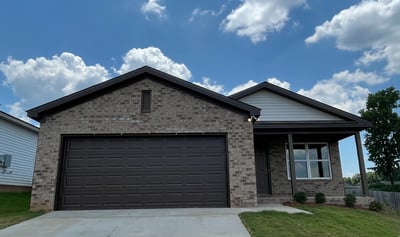 Whether you're new to investing, or simply want to explore options in your real estate portfolio, we're here to help you get the facts on single-family rentals (SFR).
Whether you're new to investing, or simply want to explore options in your real estate portfolio, we're here to help you get the facts on single-family rentals (SFR).
SFR investing has been a hot ticket item for investors for quite some time— and they're not cooling down anytime soon according to HousingWire. Despite all of the economic concerns challenging investors, headlines repeatedly cite SFRs as an avenue to stay one step ahead of the effects of inflation, both in the short-term and long-term.
So, what's behind all the hype? Let's break down the top reasons SFRs are worth your attention.
Why Invest in Single-Family Rentals?
1. It's a time-tested, reliable investment strategy
Real estate has always been a surefire addition to any investment portfolio. Even through the ups and downs of the pandemic, one real estate asset class has emerged on top: single-family rental properties. If you're still deciding on what kind of real estate, however, single-family represents an optimal investment in terms of longevity of resident stay. Apartments and other multi-family properties tend to attract more transient residents, with leases for one year or less, while we've seen successful two-year leases across our SFRs. By nature, SFR properties are designed to attract longer-term residents—those who stay between three and five years or longer. It all adds up to more money in your pocket as an investor.
2. They offer an accessible way to start—or expand—your portfolio
Despite inventory issues and rising home prices, single-family rentals remain one of the more accessible investments. By leveraging debt, investors can minimize the amount of their own money needed to start investing. The help of new technology, turnkey companies, and professional management teams minimize the investor’s need to know and do everything. This lowers the barrier to entry in terms of experience.
3. You can invest from anywhere
Remote real estate investing can be one of the best things you’ll ever do as an investor. Instead of trying to pinpoint viable rental properties within your budget nearby—which may be nearly impossible in high-price states such as Florida, California, and Hawaii—you have the luxury of expanding your search remotely. Nowadays, it's easier to perform your due diligence and find effective partners for your investment, all from the comfort of your home.
4. Diversification is a breeze
Remote investing also allows you to purchase a variety of SFRs across multiple markets, diversifying your portfolio to curb potential economic or weather-related risks. Diversifying does not simply mean spreading money around. It is all about guarding against unforeseen circumstances and creating as many opportunities as possible to achieve the goal we all share: building long-term wealth.
5. Your SFR will withstand economic highs and lows
If the COVID-19 pandemic revealed anything about real estate to us, it is the enduring demand for single-family properties. With a migration towards the suburbs and a desire for more space and square footage, SFRs became — quite literally — prime real estate in an inventory-strapped market. As a long-term, buy-and-hold investment strategy, SFRs are meant to last by design. They are less impacted by the sway of the market cycle and, under the right management time, can see decades of success.
6. Demand remains high
Because we’re amid a nationwide housing shortage, rental properties help fill some of the housing demand. Where we’ve seen the most demand, of course, is for single-family properties. The demand for SFRs has grown in the wake of the pandemic because households found themselves prioritizing different amenities. Demand for quality SFRs draws quality renters to your investment property, helping to ensure you see high rent collection rates and low vacancy and eviction rates.
7. Value also remains high
Price follows demand—it's the same for rental properties as it is for homebuyers. As valuation have risen in the last few years, so have rental prices, which means your investment property is highly unlikely to have issues paying for itself. For every year you own a rental property, the cost is offset in rent paid, equity, and in property appreciation. Don't forget, too, that investing in SFRs has other incentives too, particularly when it comes to tax benefits!
8. The potential cash flow is a nice bonus
One rule of thumb is that a property producing 10% or more in returns is "cash flowing." If you've done your due diligence and you've chosen a family-friendly SFR in a great location in a market on the rise, and it's managed by an effective team, your potential for seeing positive cash flow is great.
9. You can choose how active a role you want to play in management
The amount of expense and effort you allocate to managing your SFR investment is entirely up to your needs and preference. For the DIY-ers, playing an active role might be a more appealing option; whereas for those who prefer to delegate management, there are plenty of competitive property management companies you can hire—we should know!
10. SFRs come with a easy exit strategies
Though you will of course see the best return on your investment the longer you hold it, there might come a time when you will need to make updates to your portfolio to meet unforeseen circumstances. The 1031 Exchange is one way to make such an update, but if there comes a time when you need to liquidate your assets, your SFR will certainly provide relief. Due to the value appreciated over the time you've owned your SFR, the most obvious solution would be to sell it, though you could also offer seller financing or rent/lease-to-own options to your current resident. Regardless, the pool of people who will take your SFR off your hands is larger than that of a multi-family property. Consider these only a few of your options should you decide your SFR is no longer fitting your financial goals or needs.
Invest with the company that specializes in single-family rentals!












